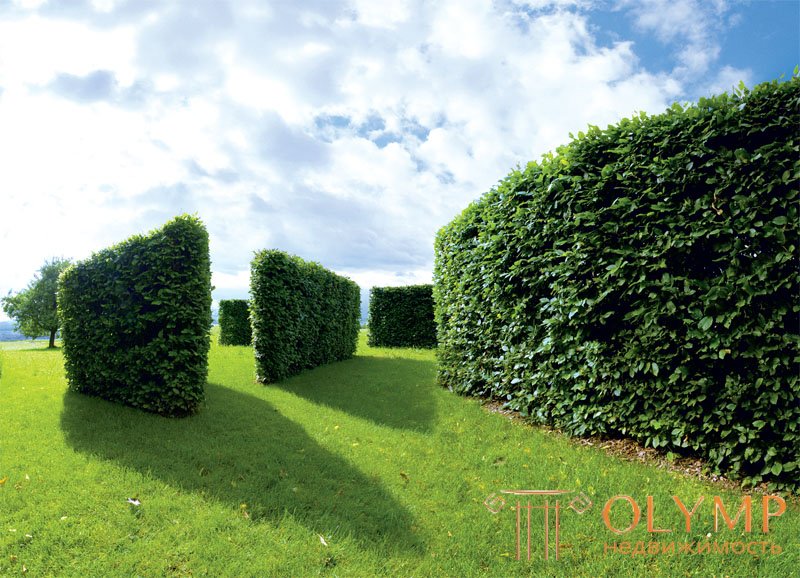
It is necessary to speak about modern gardens in connection with the parks of the last decades and what accompanies them in the field of architecture and art, it is more often possible to consider the reconstruction of historical park complexes than the creation of new ones. This is due to the fact that urban areas have developed, the land within the city is expensive, so new recreational zones arise only after reclamation. The formation of modern gardens is influenced by the emergence of new technologies and materials. By the end of the twentieth century, among the whole variety of gardens, a group stands out that has a sharp difference from the traditional ideas about the garden - these are the so-called “ART-landscapes”. The gardens of this group use the language of garden symbols, but the shape and structure of such gardens are similar to the works of non-objective art of the 20th century. In these gardens, the idea prevails over the traditional characteristics of the garden. Another distinctive feature of these gardens is the use of new technologies and materials in them. “ART-landscapes” are unique laboratories in which new ideas are born that demonstrate the prospects for the further development of landscape creative thought.
Among such features of “ART-landscapes” the following can be highlighted:
• associative links and interpenetration of different types of art, such as music, painting, theater, sculpture and architecture, into landscape art;
• the international nature of the formation of gardens. Modern gardens are designed in a certain field of influences of various cultures and traditions due to the openness of the world and the transparency of borders between states;
• “ART-landscapes” are a vivid illustration of the connection between art and the latest technological advances.
So, in the 20th century in art, a multitude of trends and directions emerged, quickly replacing each other. The era of frozen paints and forms has passed, giving way to a new art, developing in time and space; movement, change and speed became its distinguishing features. The emergence of "ART-landscapes" is a bright indicator of the penetration of the innovations of art and science of the 20th century, even into such a traditionally conservative area of art as landscape architecture.
Many researchers of this topic, in particular, Paul Cooper in his book "The Gardens of New Technologies", connect the sources of the new look at the creation of the garden with the advent of modernism. We understand modernism as the common name of trends in the art of the late XIX – XX century, which broke with the traditions of realism.
The 20th century not only brought artists unprecedented opportunities (primarily technical), but also forced them to abandon the usual world view. Already at the beginning of the century, science revised most of the “undisputed truths” of the New Age. The achievements of the past were useless, and humanity, as if in primitive times, was left alone with the terrible and mysterious world. At the same time, in spite of everything, they were looking for a way out in the continuation of the cultural tradition of the past, others - in finding lost connections with nature, and still others - in the scientific and technological revolution.
A variety of areas - a characteristic feature of the art of the XX century. In its first decades, many masters broke with established artistic traditions. However, not all modernists lived in denial of the past: in their work there are examples of a deeply individual and full-fledged realization of the experience of the art of antiquity and the Renaissance. The avant-garde of the beginning of the 20th century in most cases rebelled against traditional forms. But, as in classical art, his masters sought to creatively embody the features of the material or spiritual world - it’s not for nothing that the avant-garde heritage is recognized as an equal part of world art. Dadaism, pop art and other trends in art that influenced modern landscape architecture took their place in the annals of history.
At the moment in the world there are a great variety of different types of gardens. These are traditional gardens, whose origins go back to ancient antiquity, garden gardens, gardens that make up an inseparable whole with the building, as well as gardens based on the principles of modern non-objective art. To analyze the emergence of "ART-landscapes" by the end of the twentieth century, it is necessary to study them in the context of modern architecture. In recent decades, there has been a desire to design buildings and works of landscape architecture that would be in balance with nature and man. By the end of the last century, a number of foreign higher schools had a scientific discipline that studies these issues as an alternative to the human desire to "conquer" nature, carried out by its destruction and exhaustion. This item is “Sustainable development”, i.e. "Life-saving development" includes the study of the possibility of using in the architecture and urban planning of environmentally friendly renewable energy sources with its optimal use, the preservation of water resources, the use of building materials reuse, and the improvement of the quality of the human environment.
In the gardens created over the past decade, there is still no comprehensive solution to this problem, but the authors of modern works of landscape architecture tend to solve at least a part of it. Modern gardens can be divided into the following groups [1].
Что бы оставить комментарий войдите
Комментарии (0)